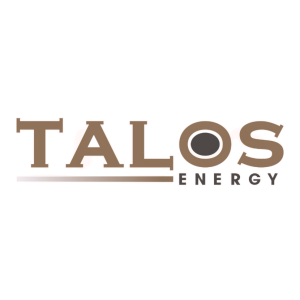Welcome to our dedicated page for Talos Energy news (Ticker: TALO), a resource for investors and traders seeking the latest updates and insights on Talos Energy stock.
Talos Energy (TALO) is an independent offshore energy specialist focused on exploration and production in the US Gulf of Mexico and offshore Mexico. This page provides investors and industry professionals with comprehensive access to the company's latest news and official communications.
Track all material developments through verified press releases, operational updates, and strategic announcements. Our curated collection includes earnings reports, partnership agreements, asset acquisitions, and technology initiatives directly from Talos Energy's corporate communications.
Stay informed about key aspects of TALO's business including deepwater drilling progress, production milestones, and environmental stewardship efforts. This resource eliminates the need to monitor multiple sources by providing timely updates in one centralized location.
Bookmark this page for convenient access to critical information that impacts understanding of Talos Energy's market position and operational strategy. Check regularly for new developments in offshore energy exploration and production.
Talos Energy announced an underwritten public offering of 8,250,000 shares of common stock, with an option for underwriters to purchase an additional 1,237,500 shares. The net proceeds will support the company's financing strategy, including repaying part of its outstanding borrowings and general corporate purposes. BMO Capital Markets is the sole underwriter, and the offering is filed under a shelf registration statement with the SEC. This event is positioned to enhance the company's financial flexibility in its operational endeavors.
Talos Energy has reaffirmed its borrowing base at $985 million after a semi-annual review. As of November 30, 2020, the company reported over $300 million in liquidity. The updated reserves as of September 30, 2020, show a total of 177.6 MMBoe, predominantly oil (68%), with a PV-10 value of approximately $2.4 billion. However, operational disruptions caused by three hurricanes in the Gulf of Mexico are expected to impact production, with updated guidance suggesting average daily production of 59.5 to 60.5 MBoe/d for December.
Talos Energy Inc. (NYSE: TALO) announced it is the apparent high bidder for two deepwater blocks in the Outer Continental Shelf Federal Lease Sale 256, held on November 18, 2020. The company secured Viosca Knoll 1000 with a sole bid and collaborated with bp on a joint bid for Green Canyon 866, totaling 11,520 acres at an average cost of under $300 per acre. CEO Timothy S. Duncan expressed optimism about the added exploration opportunities and project economics. The upcoming Lease Sale 257, scheduled for March 17, 2021, will offer over 78 million acres for further exploration.
Talos Energy (NYSE: TALO) reported a third-quarter net loss of $52 million, equivalent to a loss of $0.73 per diluted share, due to severe weather disruptions. Production averaged 48.6 MBoe/d, with oil comprising 67%. Adjusted EBITDA stood at $78.6 million. Capital expenditures reached $132.3 million, while liquidity as of September 30 was $353.8 million. The company published its first ESG report, focusing on sustainability efforts. Despite challenges, Talos aims to restore production to 71-73 MBoe/d by year-end.
Talos Energy (NYSE: TALO) reported operational updates and financial guidance amid challenges from COVID-19 and severe weather. The successful drilling of the Kaleidoscope well yielded 325 feet of net pay, with first production expected in November 2020. The company also initiated a water flood project in the Tornado field. Despite weather-related production shut-ins, Talos managed cost reductions and plans to restart production at Ram Powell in October. The revised production estimates for Q3 and Q4 2020 reflect impacts from shut-ins, with average daily production guidance of 63.0-68.0 MBoe/d for Q4.
Talos Energy Inc. (TALO) will announce its third quarter 2020 results on November 4, 2020, after market close. A live conference call is scheduled for November 5, 2020, at 10:00 AM ET. Investors can access the call via the company's website or by telephone. The replay will be available until November 12, 2020. Talos operates in the U.S. Gulf of Mexico and offshore Mexico, focusing on maximizing cash flows and long-term value through exploration and production.
Talos Energy (NYSE: TALO) announced that its operations remain unaffected by the Presidential Order extending the moratorium on oil and gas development in the Eastern Gulf of Mexico and new restrictions on U.S. Atlantic coasts. The company confirms that all its assets are in the Central and Western Gulf of Mexico, allowing for ongoing operations and future developments. Approximately 80% of Talos's U.S. acreage is in federal waters. The Gulf of Mexico generates over $28 billion annually for the U.S. economy and supports over 340,000 jobs.
Talos Energy Inc. (TALO) reported its Q2 2020 results, revealing a production of 52.4 MBoe/d, impacted by production deferrals and a net loss of $140.6 million ($2.14/share). Year-to-date, it has a net income of $17.1 million. The company has reduced its capital expenditures and expects to achieve over $200 million in cumulative savings for 2020. Talos completed a strategic acquisition and maintained $400 million in liquidity, with proved reserves of 189.5 MMBoe valued at $2.8 billion as of June 30, 2020. CEO Duncan remains optimistic about future production rates.
Talos Energy (NYSE: TALO) announced on July 7, 2020, that Mexico's Ministry of Energy instructed its partners to unitize the Zama field. This involves creating a Unitization and Unit Operating Agreement (UUOA) within 120 business days to maximize reserves’ value. The Zama development plans include two production facilities with a capacity of 150,000 barrels of oil per day. Talos expressed confidence in increasing Mexico's oil production under the current administration and emphasized continued investment despite commodity price declines.

